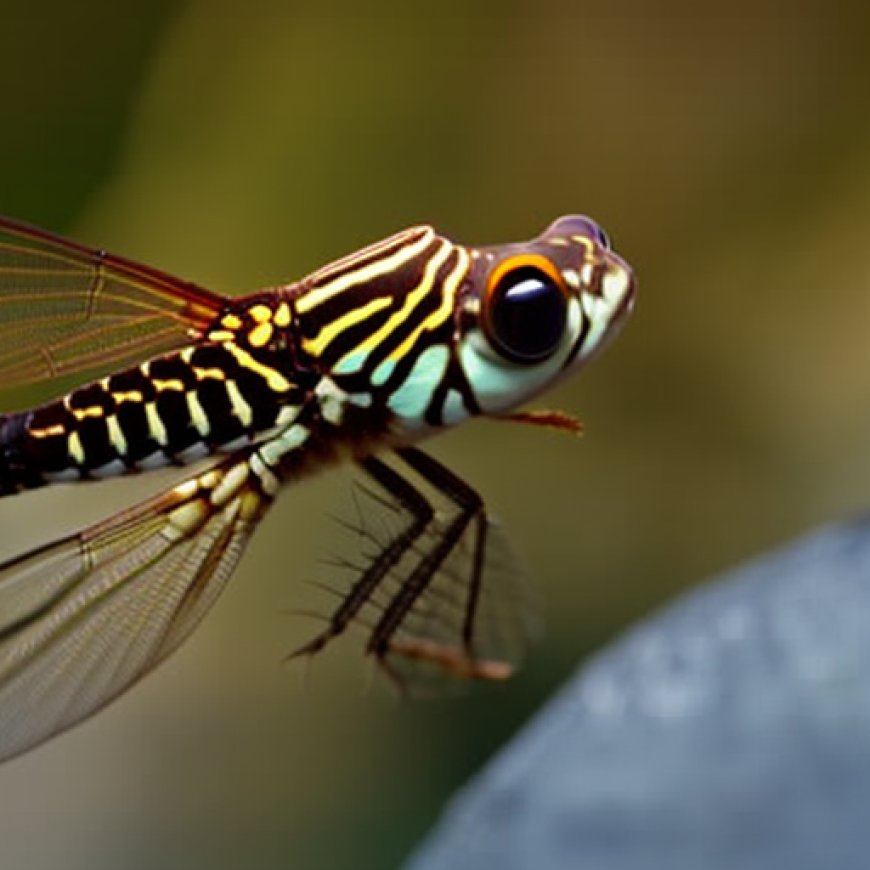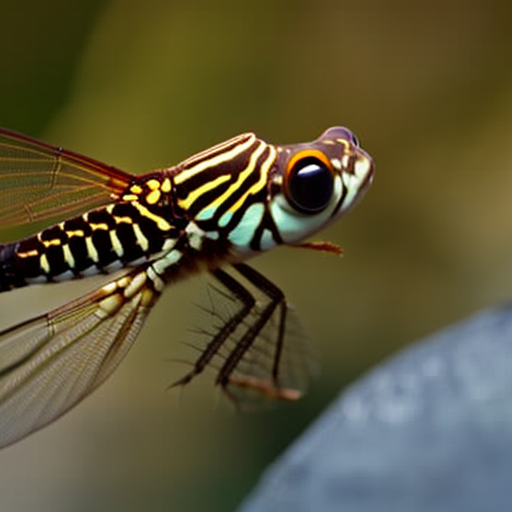Bridled Darter Back on Track for Endangered Species Protections
Bridled Darter Back on Track for Endangered Species Protections Center for Biological Diversity


Legal Victory for the Center for Biological Diversity: Bridled Darter Considered for Endangered Species Act Protections

WASHINGTON— In a legal victory for the Center for Biological Diversity, the U.S. Fish and Wildlife Service agreed today to again consider Endangered Species Act protections for the bridled darter. Bridled darters are rare fish who live in Georgia and Tennessee and are named for their markings resembling a horse’s bridle and reins.
Meg Townsend: Protecting Bridled Darters for Clean Water and Recreation
“I’m so glad the Fish and Wildlife Service has agreed to reconsider granting protections for the lovely little bridled darter,” said Meg Townsend, freshwater attorney at the Center. “We all need clean water, and protecting bridled darters will benefit people, too, by ensuring rivers are cleaner for drinking and recreation.”
Threats to Bridled Darters’ Survival
Bridled darters face multiple threats to their survival, including habitat destruction and climate change. Despite these clear threats and scientific evidence that the fish are in danger, the Service denied protection in 2017. Today’s agreement is a result of the Center’s September lawsuit challenging that decision.
Reevaluation and Decision by November 18, 2026
As part of today’s agreement, the Service has agreed to reevaluate the bridled darters’ status and make a new decision about whether they should be listed as an endangered species by Nov. 18, 2026.
Habitat and Population Decline
Bridled darters live only in small portions of six rivers and creeks in north Georgia and south Tennessee that feed into the Coosa River, including the Conasauga and Etowah rivers.
The fish were once found throughout the upper Coosa River watershed, but urban sprawl from Chattanooga and Atlanta, combined with expanding agriculture, has shrunk their habitat. Now each bridled darter population is tiny and isolated from others, making them even more vulnerable to local threats.
Previous Protection Denial and Reclassification
The Center first petitioned for the protection of the bridled darter in 2010. Despite Service scientists predicting that at least two of the darter’s six populations will be lost in the next decade, the agency decided not to protect the fish.
After protection was denied, three populations once believed to be bridled darters have been reclassified as an entirely new species — the Etowah bridled darter. This means there are even fewer bridled darters than previously believed. Fortunately, as part of today’s agreement, the Service will review the science to determine if listing the Etowah bridled darter may also be warranted.
Hope for Bridled Darters’ Protection
“I’m hopeful the Fish and Wildlife Service will do what’s right to protect the bridled darter and their unique habitat,” said Townsend. “Science, not politics, should lead the way to protecting the bridled darter and the biologically rich southeastern rivers where they live. We’re losing more freshwater species than ever to extinction, and these fish shouldn’t have been denied protection in the first place.”
Risks of Extinction
Bridled darters are a unique species in the perch family who have a swim bladder, allowing them to feed within the water column and by plucking food off the streambed. Already isolated by dams, at least half the known populations are expected to disappear because of urbanization and climate change. Remaining populations will be forced into a handful of isolated streams, putting them at even greater risk of extinction.
SDGs, Targets, and Indicators
| SDGs | Targets | Indicators |
|---|---|---|
| SDG 14: Life Below Water | Target 14.2: By 2020, sustainably manage and protect marine and coastal ecosystems to avoid significant adverse impacts, including by strengthening their resilience, and take action for their restoration in order to achieve healthy and productive oceans. | No specific indicators mentioned in the article. |
| SDG 15: Life on Land | Target 15.1: By 2020, ensure the conservation, restoration, and sustainable use of terrestrial and inland freshwater ecosystems and their services, in particular forests, wetlands, mountains, and drylands, in line with obligations under international agreements. | No specific indicators mentioned in the article. |
| SDG 6: Clean Water and Sanitation | Target 6.1: By 2030, achieve universal and equitable access to safe and affordable drinking water for all. | No specific indicators mentioned in the article. |
| SDG 13: Climate Action | Target 13.1: Strengthen resilience and adaptive capacity to climate-related hazards and natural disasters in all countries. | No specific indicators mentioned in the article. |
| SDG 11: Sustainable Cities and Communities | Target 11.3: By 2030, enhance inclusive and sustainable urbanization and capacity for participatory, integrated, and sustainable human settlement planning and management in all countries. | No specific indicators mentioned in the article. |
| SDG 15: Life on Land | Target 15.5: Take urgent and significant action to reduce the degradation of natural habitats, halt the loss of biodiversity, and protect and prevent the extinction of threatened species. | No specific indicators mentioned in the article. |
1. Which SDGs are addressed or connected to the issues highlighted in the article?
SDG 14: Life Below Water
The article mentions that the bridled darters, a rare fish species, are facing threats to their survival due to habitat destruction and climate change. Protecting the bridled darters would benefit rivers and ensure cleaner water for drinking and recreation.
SDG 15: Life on Land
The article highlights the shrinking habitat of the bridled darters due to urban sprawl and expanding agriculture. The fish populations are becoming more vulnerable to local threats as they become isolated from each other.
2. What specific targets under those SDGs can be identified based on the article’s content?
Target 14.2: By 2020, sustainably manage and protect marine and coastal ecosystems to avoid significant adverse impacts, including by strengthening their resilience, and take action for their restoration in order to achieve healthy and productive oceans.
This target is relevant as protecting the bridled darters, a species living in rivers that feed into the Coosa River, would contribute to the sustainable management and protection of freshwater ecosystems.
Target 15.1: By 2020, ensure the conservation, restoration, and sustainable use of terrestrial and inland freshwater ecosystems and their services, in particular forests, wetlands, mountains, and drylands, in line with obligations under international agreements.
This target is relevant as the article highlights the need to protect the bridled darters’ habitat in north Georgia and south Tennessee, which are part of terrestrial and inland freshwater ecosystems.
Target 13.1: Strengthen resilience and adaptive capacity to climate-related hazards and natural disasters in all countries.
This target is relevant as climate change is identified as one of the threats to the survival of the bridled darters.
Target 11.3: By 2030, enhance inclusive and sustainable urbanization and capacity for participatory, integrated, and sustainable human settlement planning and management in all countries.
This target is relevant as urban sprawl from Chattanooga and Atlanta is mentioned as a factor contributing to the shrinking habitat of the bridled darters.
Target 15.5: Take urgent and significant action to reduce the degradation of natural habitats, halt the loss of biodiversity, and protect and prevent the extinction of threatened species.
This target is relevant as the article highlights the need to protect the bridled darters, a threatened species, from habitat destruction and potential extinction.
3. Are there any indicators mentioned or implied in the article that can be used to measure progress towards the identified targets?
No specific indicators are mentioned or implied in the article that can be used to measure progress towards the identified targets.
4. Table: SDGs, Targets, and Indicators
| SDGs | Targets | Indicators |
|---|---|---|
| SDG 14: Life Below Water | Target 14.2: By 2020, sustainably manage and protect marine and coastal ecosystems to avoid significant adverse impacts, including by strengthening their resilience, and take action for their restoration in order to achieve healthy and productive oceans. | No specific indicators mentioned in the article. |
| SDG 15: Life on Land | Target 15.1: By 2020, ensure the conservation, restoration, and sustainable use of terrestrial and inland freshwater ecosystems and their services, in particular forests, wetlands, mountains, and drylands, in line with obligations under international agreements. | No specific indicators mentioned in the article. |
| SDG 6: Clean Water and Sanitation | Target 6.1: By 2030, achieve universal and equitable access to safe and affordable drinking water for all. | No specific indicators mentioned in the article. |
| SDG 13: Climate Action | Target 13.1: Strengthen resilience and adaptive capacity to climate-related hazards and natural disasters in all countries. | No specific indicators mentioned
Behold! This splendid article springs forth from the wellspring of knowledge, shaped by a wondrous proprietary AI technology that delved into a vast ocean of data, illuminating the path towards the Sustainable Development Goals. Remember that all rights are reserved by SDG Investors LLC, empowering us to champion progress together. Source: biologicaldiversity.org
Join us, as fellow seekers of change, on a transformative journey at https://sdgtalks.ai/welcome, where you can become a member and actively contribute to shaping a brighter future.
|








